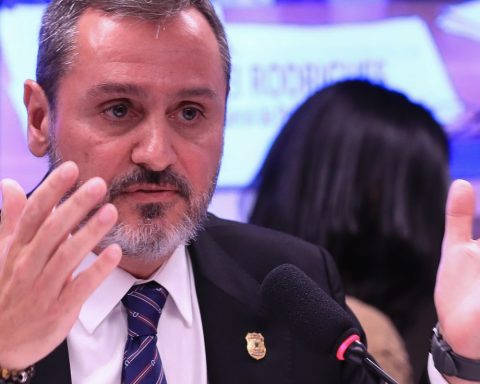UTE ended the first three months of the year with profits of US$ 32.3 million, according to the balance of the company published by the Central Bank of Uruguay (BCU). The numbers indicate that the company obtained profits of $1,326 million in current terms, according to the comprehensive income for the year. In the same period of 2021, benefits had amounted to $3,848 million. The profit measured in pesos was 66% lower in the year-on-year comparison.
Billing and income
Between January and March, the company’s net operating income grew 6.3% and amounted to $18,105 million, according to the balance sheet.
The billing performance local electricity sales showed a growth of 8% measured in national currency in the year-on-year comparison, and totaled $15,873 million (US$ 387.4 million).
For its part, the export of energy to the region reported a turnover of $1,935 million (about US$47 million). In national currency, income from this concept fell 8% compared to the same period of the previous year. Sales were concentrated almost exclusively towards Argentina with a slight participation from Brazil. In volume there was a decrease of 18% compared to 2021, according to UTE data.
It should be noted that the millionaire purchases from the northern neighbor that moved the needle last year had only been concentrated in the second half of the year when the water crisis deepened in that territory. By 2022 exports are projected for some US$ 130 million in a conservative scenario without the presence of the so-called “black swan” (rain deficit) in Brazil.
More thermal generation
In matters of costs of sale, a growth of 35% stands out. In particular higher expenses in energy materials and lubricants stand out, which totaled $5,887 million (US$ 143 million), 93% more than the first quarter of 2021 when that item had added $3,042 million (US$74 million). This in a scenario of rising oil prices at the international level and in particular diesel.
In the first trimester there was a greater use of thermal generation to supply the demand of the local market, due to lower contributions from the dams and in particular from Salto Grande (-60%). In the reference period, 30% of the energy generated was of thermal origin, with a growth of 37% compared to the previous year.
General income and stabilization fund
On the other hand, in the first three months of the year they turned to General Revenues the sum of $5,000 million (one US$122 million), as an additional contribution for fiscal year 2021. Already at the end of the previous year, a reduction in accumulated results and a liability for said amount had been recognized for this concept, explains the balance sheet.
There was also a contribution of US$ 6.1 million to the Energy Stabilization Fund (FEE). In turn, a use by UTE of the aforementioned fund for the same amount was recognized.
Issuance of US$ 100 million for construction
UTE will soon return to the local debt market with an issue of more than US$ 100 million in indexed units (UI) for the construction of a key work for the country’s energy infrastructure, such as the closure of the 500 kilovolt (kV) Transmission Ring between Tacuarembo and Salto.
The construction is in charge of the state company China Machinery Engineering Corporation (CMEC). The project, which will require almost three years of work and is expected to be operational in January 2025, will be developed through a financial trust constituted by a UTE, with República Afisa as trustee, and has a total cost of about US$207 million. . In addition to the UI issue, there will be a contribution of its own capital by the UTE and financing granted by IDB Invest, a member of the IDB group.
















